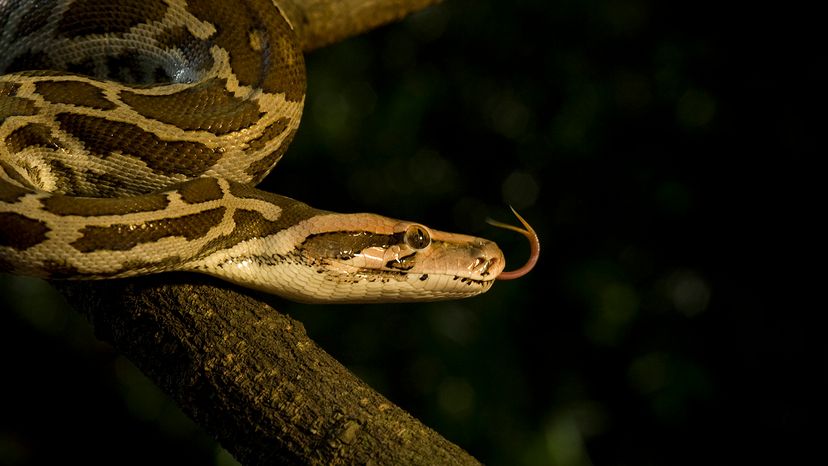Conservation efforts for the Indian python involve a combination of legal protection, habitat conservation and awareness programs, given it a threatened species status in many parts of its range.
Internationally, the Indian python is listed under Appendix I of the Convention on International Trade in Endangered Species of Wild Fauna and Flora (CITES), which regulates the trade of animal and plant species to ensure it does not threaten their survival in the wild.
This listing means that any international trade of the snake or its body parts is closely monitored and controlled.
In its native range, particularly in India, the python is protected under various national wildlife protection laws. This protection makes it illegal to kill or capture these snakes. In addition to legal protection, conservationists are working to preserve its natural habitats. Efforts include conserving and restoring forests, grasslands and wetlands, which are crucial for their survival.
Telemetry Studies
In 2019, researchers from the Wildlife Institute of India chipped 10 pythons for a radio telemetry study to understand their home range and behavior. The study revealed that they are "shy, elusive snakes that steer clear of human encounters," which can be beneficial to inhabitants of farmland where they can control pest populations.
Radio telemetry studies in wildlife conservation involve tracking animals using radio transmitters. This technology provides data on animal movements, behaviors and habitat use. By understanding these aspects, researchers can make informed decisions about conservation strategies.
For example, identifying critical habitats helps create protected areas, understanding migration patterns aids in maintaining wildlife corridors and learning about breeding behaviors can inform breeding programs.
Spreading the Word About Indian Pythons
Conservation actions often include education and awareness programs. These programs aim to reduce human-python conflicts by educating local communities about the ecological role of pythons and promoting coexistence strategies. Such programs are crucial in areas where pythons are often killed due to fear or in retaliation for preying on livestock.
Rescue and rehabilitation centers also play a role in conservation efforts. These centers care for injured or confiscated pythons, intending to release them back into the wild whenever possible.
Captive breeding programs, primarily in zoos and breeding centers, contribute to conservation by maintaining genetically diverse populations of pythons. These programs can also serve educational purposes, raising public awareness about the species and its plight in the wild.
This article was written in conjunction with AI technology, then fact-checked and edited by a HowStuffWorks editor.



